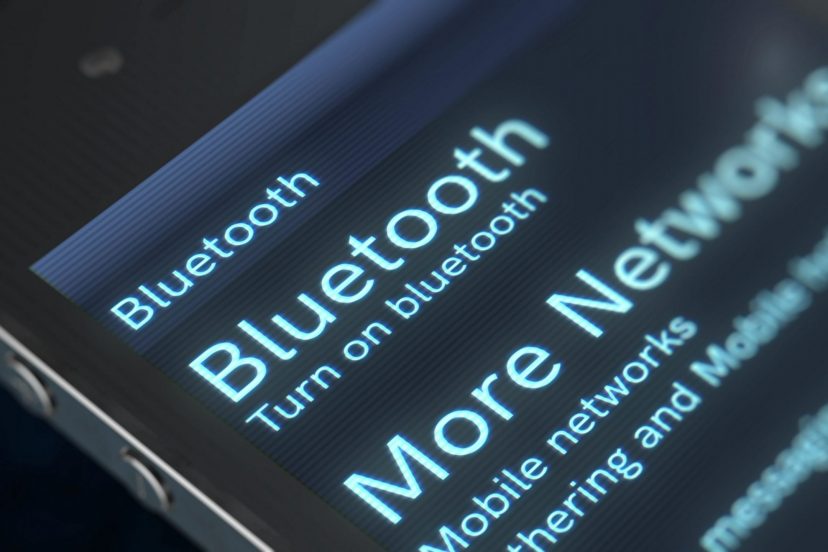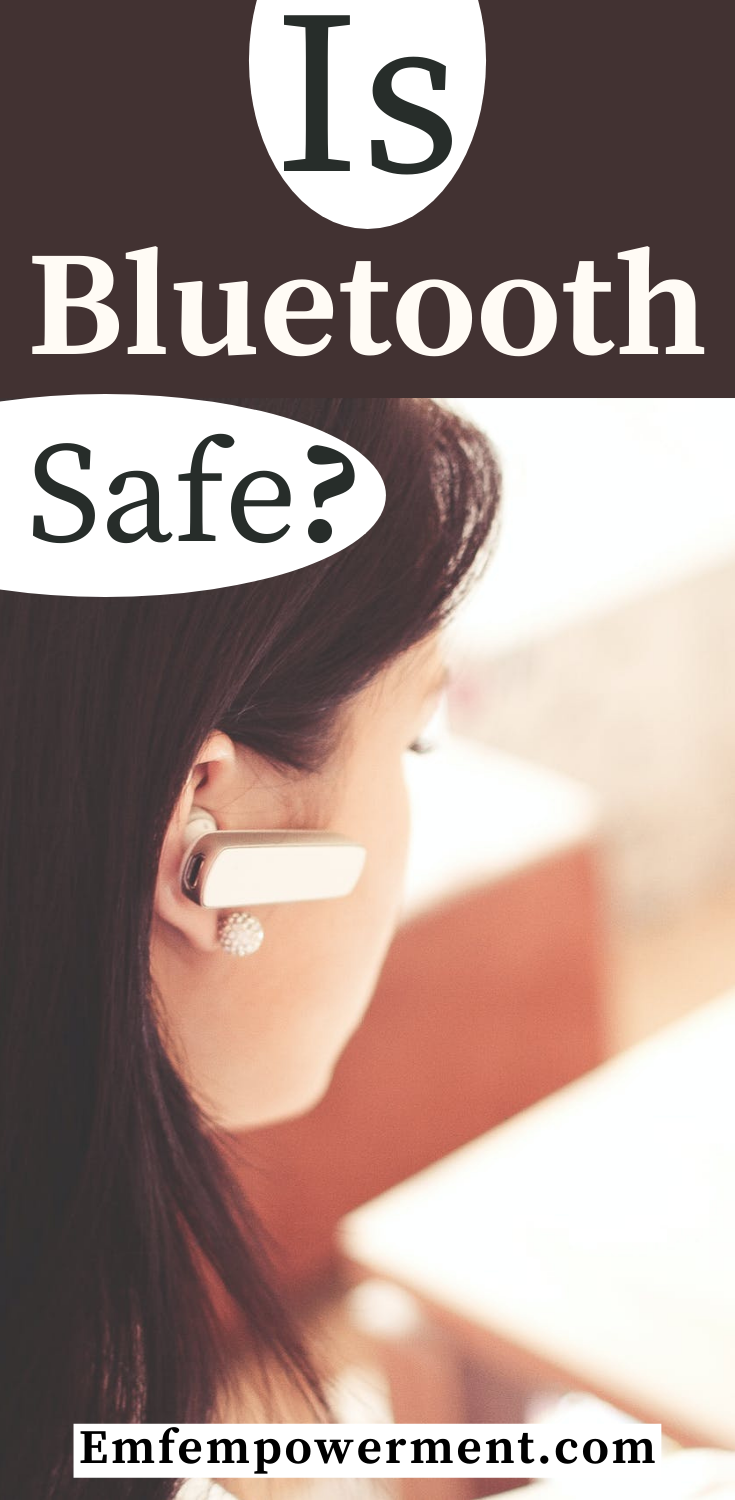On April 3, 1973, the first mobile phone was created. Since then, cell phone technology has…
Is Bluetooth Safe? An In-Depth Look

*We may earn a commission for purchases made using our links. Please see our disclosure to learn more.
On the way to work in the morning, your phone automatically connects to your car stereo. Your wireless headset allows you to make calls throughout the day, hands-free. Your smartwatch tracks your steps during your lunchtime walk, and the data is displayed in real-time in an app. When you get home, you turn on your wireless speaker and play some music through your phone.
All of these actions are made possible by Bluetooth. The technology is very much an integrated part of our daily lives, which is why it’s a good idea to ask ourselves one simple question. Is Bluetooth safe?
In this article, we will seek to come up with an answer.
Bluetooth and radiation
Basically, Bluetooth devices act as either a receiver or a transmitter. The primary device — usually your phone or something similar — transmits a radiofrequency signal. That signal is then picked up by a receiver — your wireless headset, a speaker, etc. This signal is a form of EMF radiation.
For more about the technical side of Bluetooth, see What Is Bluetooth and How Does It Work?
In the United States, Bluetooth radiation falls under the regulatory jurisdiction of the Federal Communications Commission. There are no regulations pertaining to Bluetooth devices specifically, however. The closest comparison would be cell phone radiation, which is gauged by Specific Absorption Rate (SAR). SAR levels are essentially the amount of radiation absorbed by living tissue. The FCC limits cell phone SAR levels to 1.6 W/kg max.
Comparatively, the SAR levels of the average Bluetooth device are going to be much smaller than that of a cell phone. For example, Apple’s Airpods, which operate using Bluetooth, have a SAR of .466 — well under the FCC’s legal cell phone limit.
Does Bluetooth cause cancer?
No formal link between Bluetooth radiation exposure and cancer has been established. However, Bluetooth is a form of RF-EMF radiation. The World Health Organization’s International Association for Research on Cancer notes that RF-EMF radiation is a possible carcinogen for humans, meaning that it could cause cancer — more research is necessary to know for certain.
The WHO’s designation is based on data that suggests prolonged cell phone usage may be associated with a higher instance of gliomas and heart tumors. Scientists came to that conclusion after exposing rats to 2G and 3G signals for multiple hours every day over the course of years. The rats experienced higher rates of tumors than a control group.
Bluetooth and your health
In addition to potentially causing cancer, RF-EMF radiation has been associated with fertility issues in men, miscarriages in pregnant women, neurological issues, and the development of Electromagnetic Hypersensitivity. These issues have not been tied to Bluetooth, specifically, but rather RF-EMF exposure in general.
Is Bluetooth safe?
Without more scientific research into Bluetooth radiation, it’s impossible to say for certain whether or not the technology is safe. The research does suggest that cell phones may be linked to health issues, and cell phones do also produce RF-EMF radiation. Additionally, cell phones, themselves, are Bluetooth devices. That being said, dedicated Bluetooth devices generally produce much lower radiation levels than your average cell phone.
The problem, really, is the way in which we interact with our Bluetooth devices. Let’s consider a few examples.
- Fitness trackers. Fitness trackers sync with your cell phone using a Bluetooth connection, and most popular models do not allow you to turn the Bluetooth off. At the same time, users are encouraged to wear the trackers 24/7, taking them off only to charge. Most trackers are even able to monitor your sleep cycles, meaning you are wearing the device on your body during its most restorative time.
- Wireless headsets. Headsets allow for convenient, hands-free phone operation. When you wear a Bluetooth headset, however, consider where the Bluetooth receiver is placed– right in your ear. Some will argue that this still exposes you to less radiation than talking on a cell phone directly, and that is true. Nonetheless, when using a Bluetooth headset, you are still placing a radiation source in close proximity with your head.
- Car stereos. Many newer cars have stereos that are designed to sync up with your phone wirelessly, using a Bluetooth connection. After the initial pairing, the connection occurs automatically, each time you start the vehicle up with a paired phone present. This means that every time you’re in your car, you are right in the middle of an active Bluetooth network. If you are someone who has a long daily commute, that could add up to a great deal of exposure.
- Gaming controllers. Many gamers opt to use wireless controllers, for convenience and comfort reasons. Unless they are plugged in to charge, these controllers use a Bluetooth connection to communicate with the gaming console. Take that in conjunction with the fact that it’s common to hold the controller near your body while playing, and you could be exposing yourself to excessive amounts of radiation, particularly if you play for prolonged periods.
- Wireless keyboards and mice. If you use a wireless keyboard or mouse, there is a good chance that it communicates with a receiver using Bluetooth. That means while you are using your computer, you are sitting in an active Bluetooth network. And, if you place your keyboard on your lap while you type, you are placing a radiation-producing device directly on your body.
The takeaway is that we simply don’t know if Bluetooth is safe, and yet we are constantly placing these devices on or near our bodies.
Protecting yourself
If you’re not comfortable with the level of uncertainty surrounding Bluetooth safety, there are a few things you can do to minimize your exposure.
- Put your phone in airplane mode. One hugely beneficial thing you can do is to put your phone in airplane mode whenever possible. Cell phones are major producers of EMF radiation, and when you disconnect your WiFi, Bluetooth, and data, they become much safer to use. If you don’t want to disconnect completely, try just turning off your phone’s Bluetooth. This can usually be done right from your phone’s settings screen.
- Use a wired headset. Creating space between your body and your phone is key, but wireless headsets also expose you to Bluetooth radiation. The workaround, then, is using wired headsets that allow for hands-free cell phone operation without the Bluetooth. Air tube headsets, in particular, produce minimal amounts of radiation and are one of the safest choices out there. One option is DefenderShield’s EMF-Free Earbud Headphones. For more, see the 10 Best Air Tube Headsets of 2022.
- Switch to a safer fitness tracker. If you wear a fitness tracker, there’s a good chance you are doing so because of your health. If that is the case, you may want to ditch the Bluetooth-enabled models, or at least find one that allows you to disable that feature. Sure, you won’t be able to sync with your phone as often, but you can still track your steps in the meantime. Garmin’s Vivosmart HR is one option that allows you to disable Bluetooth. For others, see Fitness Trackers Without Bluetooth.
- Whenever possible, go wired. Wired connections do not produce nearly the amount of EMF radiation that Bluetooth connections do. With that in mind, if you are able to plug-in, opt for that over going wireless. For example, if your car has an aux cable or USB port, plug your phone into that and connect to the stereo that way.
- Wear protective clothing. When you do find yourself using Bluetooth, EMF protective clothing can help minimize your exposure, anyway. Protective hoodies, hats, shirts, underwear, and other articles of clothing are a great investment if you often find yourself in situations where Bluetooth usage is necessary. See the EMF Protection Clothing Complete Guide to find out what clothing options are out there.
Final thoughts
Bluetooth, like other forms of radiation, requires more research to say for certain whether it’s safe. If you are concerned, your best bet is to minimize your exposure to Bluetooth devices. 



